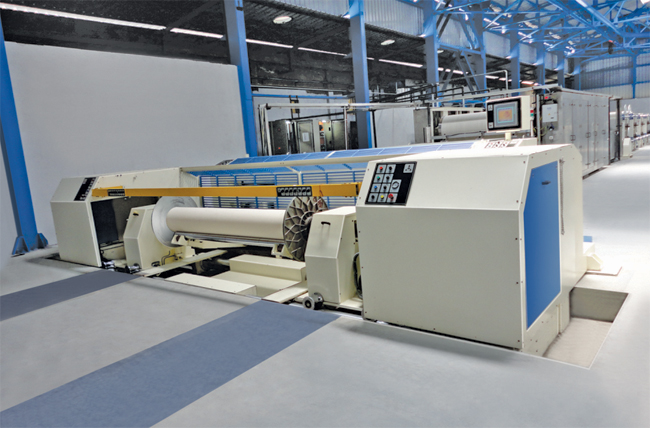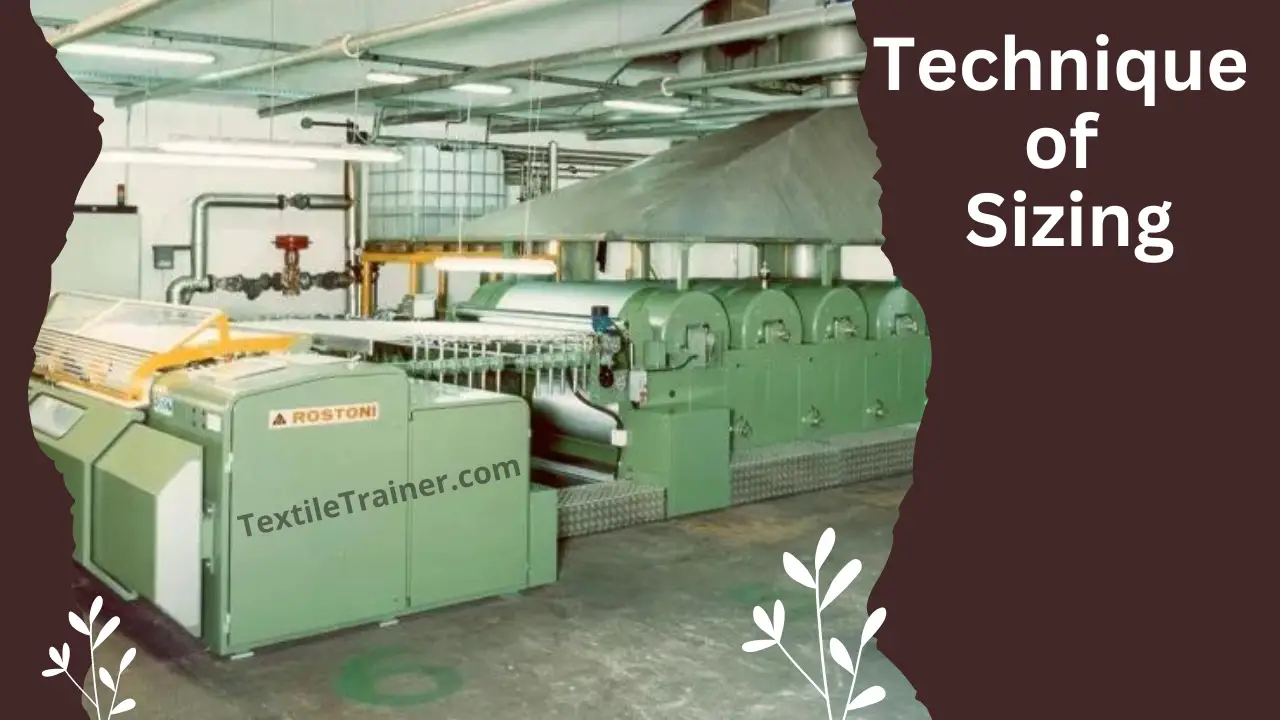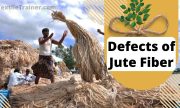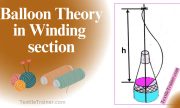It is well known that warp yarns undergo a variety of complex stresses during weaving, including bending forces, dynamic tension with a high periodicity, friction, static electricity, etc. These stresses vary according to the type of yarn and processing conditions, such as weaving machine, humidity, etc. In addition, the treatment received during beam preparation greatly influences the severity of stresses and damage to the yarn. Through the techniques of sizing or sizing process, warp yarns are strengthened, elasticity and smoothened, and they become resistant to abrasion and static charge. The fibers are fixed in the position they were before sizing in order to achieve quality sizing. Aside from deep sizing, it is also important to apply size as a film on the thread’s surface to provide outer protection.
I am going to describe in this article types of sizing and techniques of the sizing process in a simple and concise manner.

Types of Sizing:
There are different types of sizing depending on the application. They are:
- Pure sizing: It is a type of sizing process that is used to produce unbleached fabrics. In case of pure sizing, 7 to 10% of the warp yarn is made up of size ingredients.
- Light sizing: The use of light sizing in warp yarn can be used for printing and dyeing. In the case of light sizing, 11-15% size ingredients are used in the warp yarn.
- Medium sizing: About 16-40% of the sizing ingredients are used on the weight of yarn in order to increase its weight and strength.
- Heavy sizing: The purpose of heavy sizing is to increase the weight of warp yarn. Especially, it is used for yarns that have been twisted or that have a lower count. Above 40 % sizing ingredients are used for yarns with a heavy weight.
Techniques of Sizing:
Sizing is the process by which adhesive is coated onto the warp yarn to increase its strength, abrasion resistance, and smoothness. This is achieved by various techniques, depending on the weaving machine capacity. The following are some of the different sizing techniques used in weaving factories for the sizing process:
- Hot melt sizing.
- Emulsion sizing.
- Solvent sizing.
- High pressure sizing.
- Electrostatic sizing.
- Foam sizing.
- Combined sizing.
In order to better understand the techniques of sizing that have been mentioned above, let’s briefly discuss them.
1. Hot Melt Sizing:
The technique of hot melt sizing is used for high-speed weaving, especially on shuttle fewer looms, to deal with yarn hairiness. In weaving, yarn hairiness occurs when tiny fibers stick out from the yarn, causing weaving problems and adversely affecting fabric quality. In the warping machine, sizing is done by a special arrangement called the size applicator. As the warp is kept pressed, the size is kept as a cake. With hot melt sizing, modern weaving technologies can benefit from smoother and more efficient weaving processes while producing high-quality fabrics.
2. Emulsion Sizing:
In the case of emulsion sizing, the size ingredients have been passed through an emulsion. In this case, the emulsion is formed by the mixing of oil polymer and soap to make an emulsion.
3. Solvent Sizing:
Textile industries use solvent sizing to strengthen yarns without using water in an innovative and cost-effective way. The process utilizes organic solvents instead of traditional aqueous solutions. This machine has a hood that protects solvents from evaporating, so there is little solvent loss here, and solvent can still be used. Solvent sizing is not just about cost savings, it also has many other benefits. Eliminating water from the sizing process reduces moisture content, resulting in quicker yarn drying times, resulting in more efficient manufacturing practices.
4. High Pressure Sizing:
During high pressure sizing, a significant amount of pressure is applied to the warp yarn to facilitate the penetration of the size solution. As a result of high pressure sizing, you may notice that it is more expensive than other sizing techniques. Despite its faster drying times, high pressure sizing has a smaller size take up percentage than other sizing techniques.
5. Electrostatic Sizing:
An electrostatic sizing technique is an advanced and costly method of sizing yarn. In this method, the size solution is applied to the yarn using electrostatic attraction. Although this innovative approach offers unique advantages, its implementation requires specialized equipment and precise control systems, which increases its cost.
6. Foam Sizing:
In foam sizing, a foaming agent is added to the size solution as part of a specialized sizing process. Foam sizing is used to achieve light shades and enhance the yarn’s overall quality by securing a rich and stable foam which is then applied to the warp yarn during the sizing process.
7. Combined Sizing:
Combined sizing is a specialized technique primarily employed for sizing denim fabrics. It involves two distinct steps to achieve the desired fabric properties. A dyeing process first imparts color to the warp yarn, and second, a sizing process enhances the strength and performance of the yarn.
The textile industry relies heavily on sizing processes to enhance fabric quality and performance. In order to cater to specific needs, a range of sizing techniques are available, such as, emulsion sizing, high-pressure sizing, electrostatic sizing, foam sizing, and combined sizing. If you have any questions about this article, feel free to leave a comment in the box below.
Reference:
- Adanur, S. (2001). Handbook of weaving. Boca Raton: CRC press.
- banerjee, N. (2000). Weaving Mechanism. West Bengal: Smt. Tandra Banerjee and Sri Apurba Banerjee.
- Belal, P. D. (2016). Understanding Textiles for a Merchandiser. Dhaka: LB Graphics & Printing.
- Gandhi, K. (2012). Woven Textiles. New Delhi: Wood Publication Limited.
You May Read:







Really informative blog post.Really thank you! Want more.